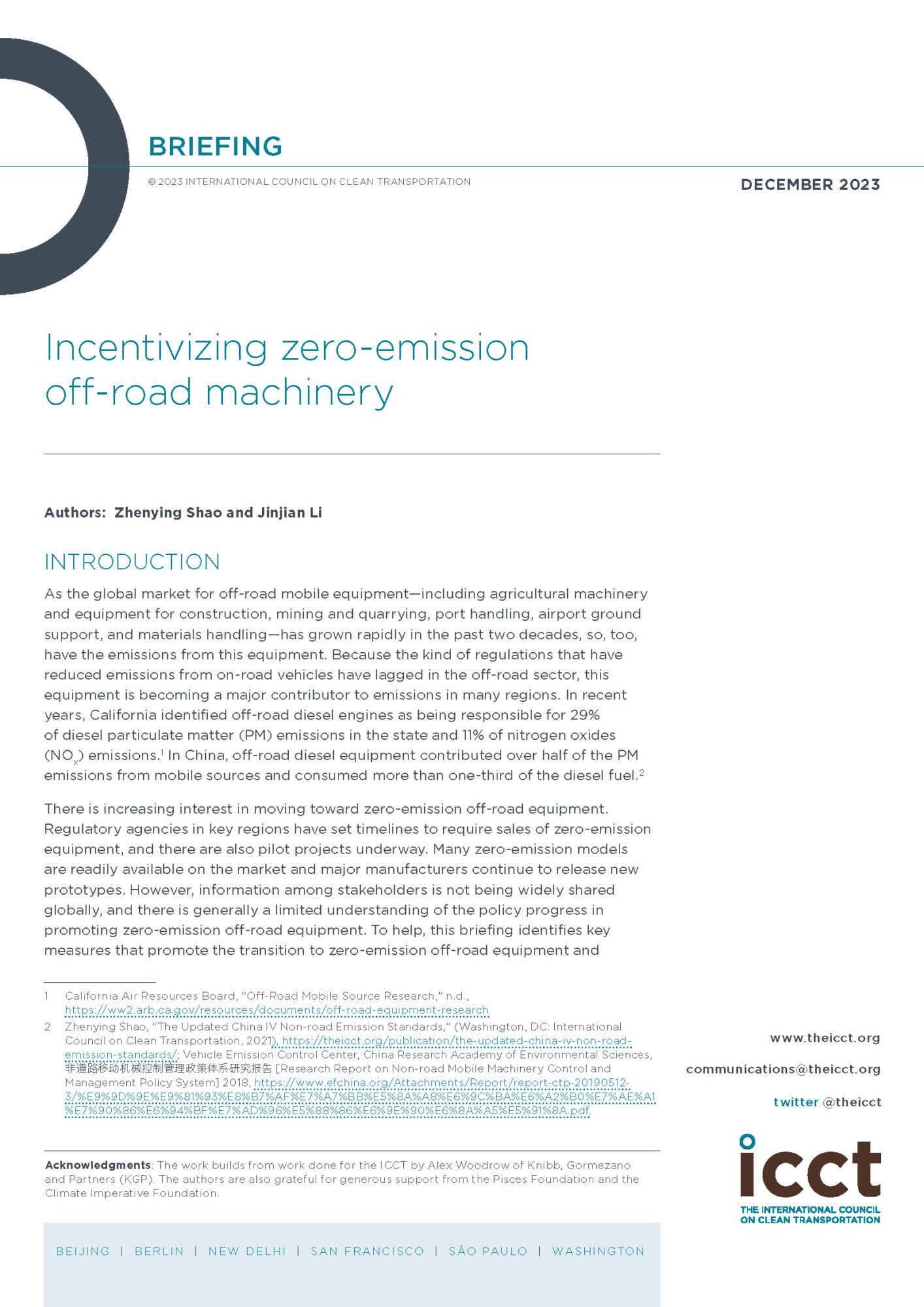Blog
India needs a policy push to harvest the rich benefits of electric tractors
This blog was originally published in ETAuto.
Even though a record 1.66 million electric vehicles (EVs) were sold in India in fiscal year (FY) 2023–24, according to Ministry of Road Transport and Highways, only four were classified as agricultural tractors. You read that correctly—a single-digit number of electric tractors (e-tractors). Meanwhile, two-wheelers and three-wheelers were 94% of all EVs sold in FY 2023–24, and cars and buses saw an increase in EV sales of approximately 90% and 75%, respectively, over FY 2022–23.
The e-tractor is a multifaceted opportunity to support India’s green growth by expanding exports and decarbonizing transport. Let’s dig into this and then see how policy can help accelerate the market.
It’s been more than three years since the launch of first e-tractor in India. While there are several more e-tractor models on offer for Indian consumers today, adoption is still negligible despite close to 1 million in sales of tractors annually. Tractor sales are an indicator of rural economic growth and one of its key drivers.
According PPAC data, tractors recently consumed an average of 4.8% of India’s high speed diesel, close to the amount consumed by buses (5.9%) and four times the amount consumed by three-wheelers (1.2%). Tractors are subject to Bharat Stage (CEV/Trem) IV emission standards and will be until 2026; meanwhile, road vehicles leapfrogged from BS IV to stricter BS VI standards on April 1, 2020, more than four years ago. ICCT research from 2016 included projections showing that particulate matter and nitrogen oxides emissions from off-road vehicles could exceed those from on-road vehicles by 2030. Apart from mitigating greenhouse gas emissions and reducing imports of crude oil, e-tractors also have the potential to reduce farming costs and improve farmer health by mitigating noise, vibrations, and exposure to diesel fumes. According to some manufacturers, with instant torque delivery and better precision and control, e-tractors can also do the same stationary task as diesel tractors in far less time.
The Indian tractor industry is among the largest in the world and accounts for about a third of global production. Revenue from exports is 10%–15% of the total revenue of the industry. A quarter of India’s exports are to the United States, where goals for zero-emission tractors are emerging in some states. ICCT’s global briefing also highlighted stricter emission regulations and zero-emission targets in the European Union, which imported tractors worth almost US$300 million in 2022.
With a strong domestic market and stricter emission regulations in export markets, the Indian tractor industry has the potential to become a leader in global off-road electrification. Here are four ways that policy can help to accelerate the manufacturing and adoption of e-tractors in India.
Introduce financial incentives
The Central Government’s FAME-II scheme has no incentives for e-tractors. Haryana is the only state currently offering incentives for e-tractors in its EV policy; the state provides a purchase incentive of 50% of the ex-showroom price up to INR 5 lakh for the first 1,000 e-tractors. The ICCT’s analysis of the 10-year total cost of ownership (TCO) showed e-tractors to be just 3% costlier than diesel tractors.
However, the upfront purchase cost for e-tractors is more than double that of diesel tractors. Purchase incentives for e-tractors offered by both central and state governments have the potential to substantially improve their cost competitiveness. Introducing incentives consistent with those for on-road EVs in the upcoming FAME-III scheme could be enough to eliminate the TCO gap between diesel and electric tractors. Furthermore, the states could be similarly equitable in their EV policies by offering purchase incentives to tractors the same way they offer them to on-road EVs like two-wheelers and three-wheelers, which already have much more favorable TCO parity than e-tractors.
Reduce GST and insurance premiums
While on-road EVs are levied a reduced GST of 5%, e-tractors continue to be taxed the same as diesel tractors at 12%. Similarly, on-road EVs enjoy a 15% discount on third-party insurance premiums compared with their diesel counterparts, but the same provision is not available for e-tractors. ICCT analysis showed that a GST rate reduced to 5% and discounted insurance would bridge the cost gap between electric and diesel tractors by about 50%.
Offer subsidized electricity for agriculture
Many states, including Andhra Pradesh, Tamil Nadu, Telangana, and Punjab, offer free electricity for use in agriculture. Some others offer subsidized electricity. The electricity used for operation is the largest cost component over the lifetime of an e-tractor. ICCT analysis showed that offering discounted electricity can entirely bridge the TCO difference between electric and diesel tractors. difference between electric and diesel tractors.
Strengthen emission standards
India’s BS (CEV/Trem) IV tailpipe emission standards apply to agricultural tractors with engine power of more than 37 kW. However, about 78% of tractors sold in 2021 had engines with less than 37 kW of power. While these will be regulated by upcoming BS (CEV/Trem) V standards, the standards were postponed from their original April 1, 2024 enforcement date to April 1, 2026. So, although on-road emission standards reached BS VI standards on April 1, 2020, many tractors sold in 2024 are still following pre-BS (CEV/Trem) IV standards. Tractors with engines less than 37 kW could be included in the BS IV regulation without waiting for the BS V standard in 2026. It’s technologically feasible, as Indian manufacturers are already meeting these standards in the tractors they manufacture for export to the United States, where similar standards are in place.
All of this said, there are still data gaps that hinder a full understanding of tractor applications and their usage patterns in India. For one, data to differentiate between the energy consumed by tractors for agricultural operations and for moving people and goods is lacking. Primary surveys are needed to better understand both the agricultural and social operations of tractors and their ownership models (purchase versus renting).
Having this information would enable strategic policy interventions to accelerate e-tractor adoption in India. Regardless, with a concerted policy push that starts soon, central and state policymakers can leverage the descendants of the green revolution to support e-tractors and India’s green growth.
Author
Related Publications

This briefing paper identifies and discusses 12 key measures adopted worldwide that could incentivize the transition to zero-emission off-road equipment.

